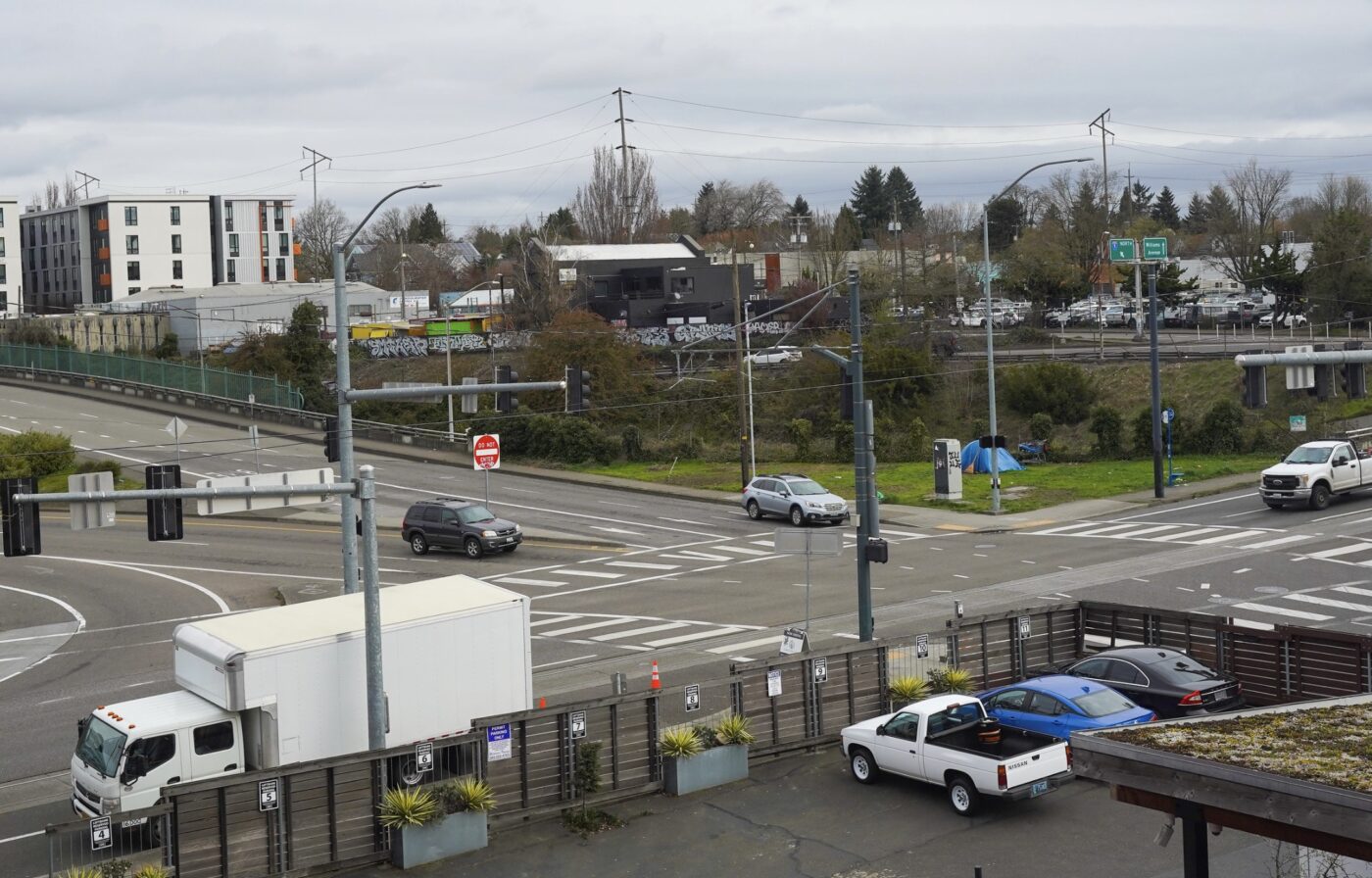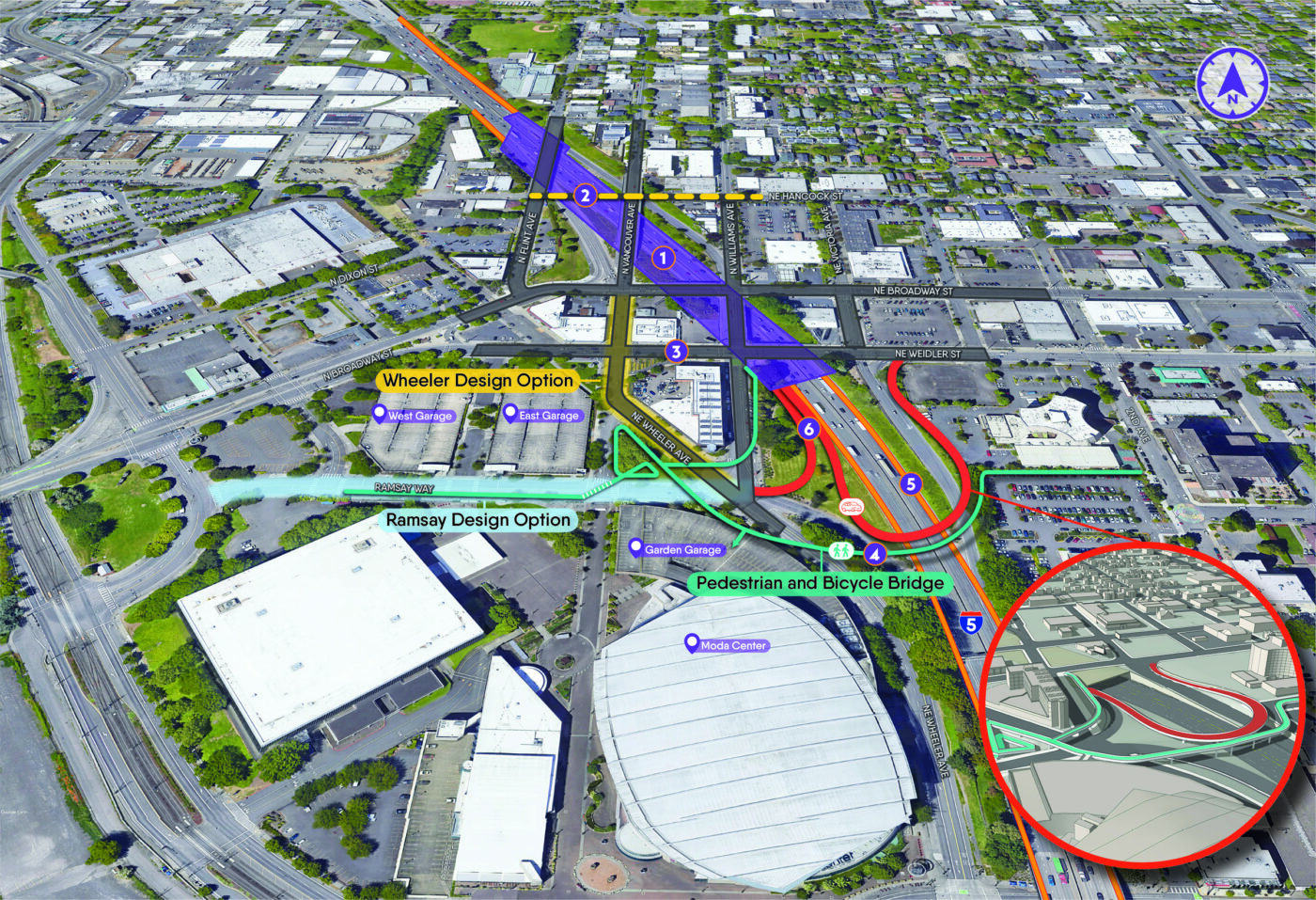Because the State of Oregon has routinely over-committed to building freeway expansion megaprojects without the means to pay for them, its transportation department now finds itself with only bad choices. But instead of internal management shifts, cutting back or pausing those projects, or asking Oregonians to pay more for the privilege of using them, they might go even further into debt and/or raid the coffers of vital, already-funded projects in order to maintain business as usual.
On the chopping block are road maintenance, bridge seismic retrofit, public transit, and bicycling and walking projects.
That was the shocking scenario presented to members of the Oregon Transportation Commission at their meeting Thursday where they were asked to advise Oregon Department of Transportation staff on how to move forward on two key projects after tolling plans the agency was counting on to pay for them were scrapped by Governor Tina Kotek two months ago.
At Thursday’s meeting, commissioners got a presentation about ODOT’s Urban Mobility Strategy, an ambitious plan that includes five major freeway projects in the region and carries a price tag of about $7 billion.
“We’re in a pickle, because we’re spending more than we expected to spend, and we’ve probably got a real credibility problem around the state,” said OTC Commissioner Jeff Baker at the meeting. “It’s a really hard choice, and there are no good answers,” Commissioner Sharon Smith added.


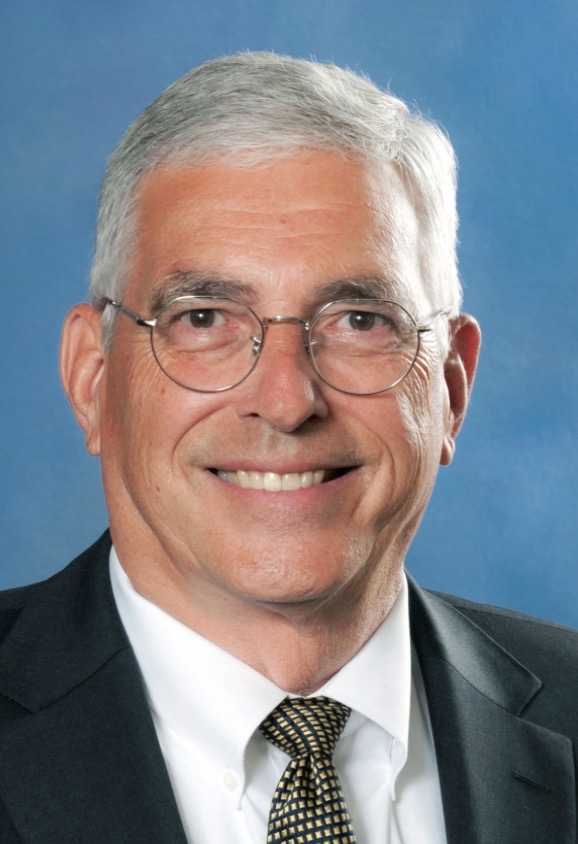

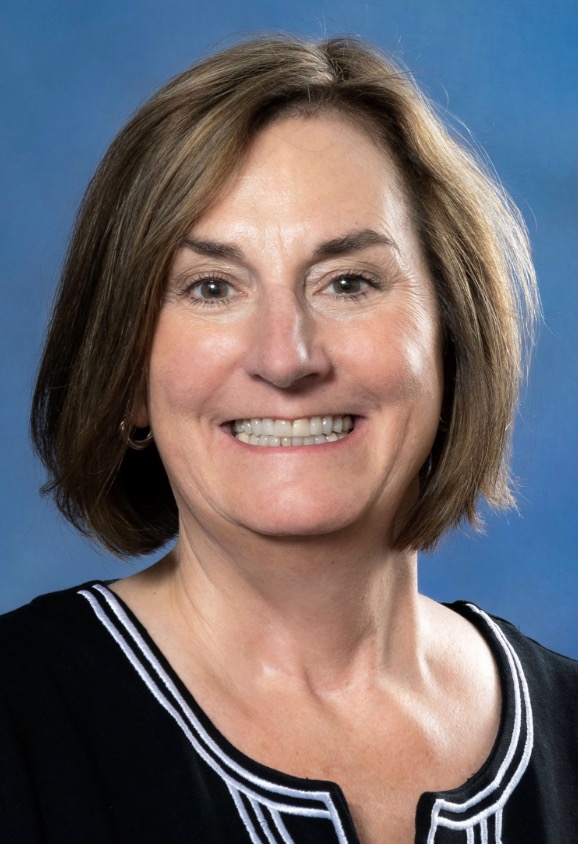
ODOT’s I-5 Rose Quarter and I-205 Abernethy Bridge projects are in need of an estimated $1.5 billion in additional revenue to be completed, and because they both have serious political inertia at the moment (the Rose Quarter has VIP status at USDOT thanks to Albina Vision Trust and Abernethy is already under construction), ODOT is desperate to keep these snowballs rolling down the hill.
And with no money on hand, the choice is to either delay funding of other, already-promised projects, or plunge ODOT further into debt — a massive black hole the agency already throws one out of every four dollars into.
While the Rose Quarter has made recent headlines for winning $488 million in federal grants, that amount is nowhere near its $1.9 billion estimated price tag. ODOT announced at the meeting yesterday that since the USDOT already awarded Oregon $450 million for the Rose Quarter through its Reconnecting Communities & Neighborhoods (RCN) grant, the project is now automatically on a “highly recommended” list for the federal INFRA grant program that could net ODOT another $750 million. That prospect has ODOT and members of the OTC and Oregon Legislature salivating.
The catch with the INFRA grant is that it requires a 40% match — 20% of which must be paid by ODOT (the other 20% will be paid with funds from the aforementioned RCN grant), and they’ve already applied for the grant even without having the estimated $250 million local match secured.
And even if ODOT won another $750 million grant for the Rose Quarter, they’d still be unable to finish the project. At yesterday’s meeting, ODOT Urban Mobility Office Director Brendan Finn said with the money from the three federal grants and other revenues on hand, they’d be able to finish the highway cover, build all the I-5 freeway safety and operational improvements, and construct a bicycle/pedestrian bridge over I-5 south of NE Weidler. But to tie the new lanes into I-405 and I-84, they’d need an additional $300 million.
So as it stands today, even if ODOT won the $750 million federal INFRA grant, they’d still need to come up with at least $600 million to complete the I-5 Rose Quarter project — the $250 million in matching funds and $350 million to finish the freeway elements.
To finish the $750 million Abernethy Bridge project, ODOT needs another $304 million.
To climb out of this hole, ODOT Assistant Director for Revenue, Finance and Compliance Travis Brouwer asked the OTC what they should do.
“First, should ODOT repay some of the funding that was transferred from the Rose Quarter to I-205, or just focused on closing the funding gap for the I-205 Abernethy Bridge project? And second should the funds that are needed to close this gap come from making cuts by deferring projects in the 2024-2027 STIP [Statewide Transportation Improvement Program, a list of funded projects] or do you want to spread out those reductions over the next 12-25 years by covering the gap through bonding or do want to do some combination thereof?”
Another way to handle the shortfall is to scale-back projects to reduce their cost, but that option wasn’t talked about much. When Brouwer mentioned, “opportunities to look for value engineering and scope modifications,” he was quick to remind OTC members that that’s, “always a very challenging conversation both with with ODOT and with partners on the projects.”
No OTC members offered ideas to reduce the scope of the planned freeway projects, but there were several comments that questioned the need for the estimated $70 million bicycle and pedestrian bridge planned over I-5 near Moda Center. “The bicycle path has nothing to do with the original plan,” remarked OTC Commissioner Lee Beyer, who then said Portlanders should support it more if it’s truly that important.
If the OTC advises ODOT to take money already allocated toward the upcoming STIP, they’ll have to decide which specific projects get delayed. A list of hundreds of bridge maintenance, seismic renovations, and bicycle and pedestrian projects that are on the chopping block were made available in the meeting packet.
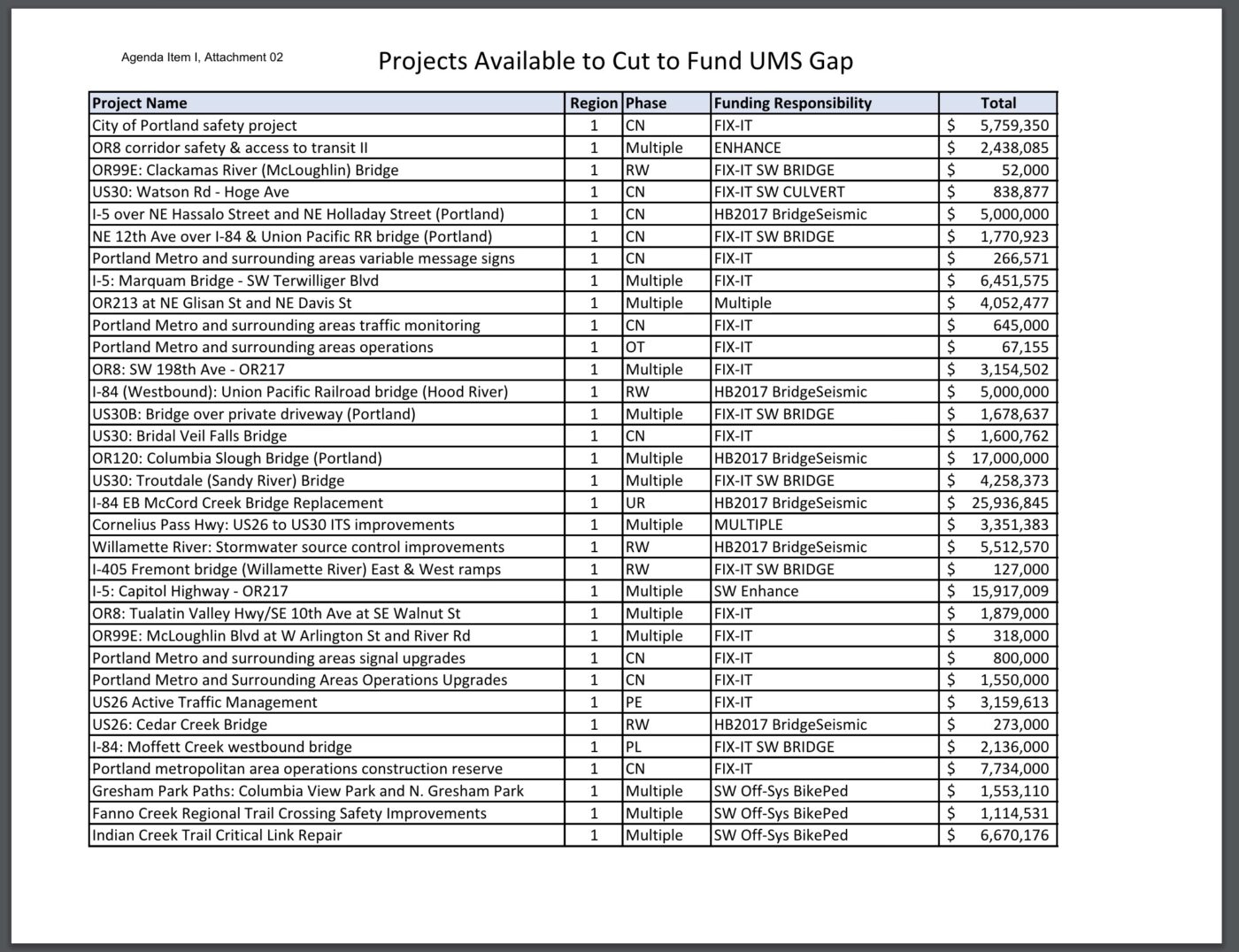
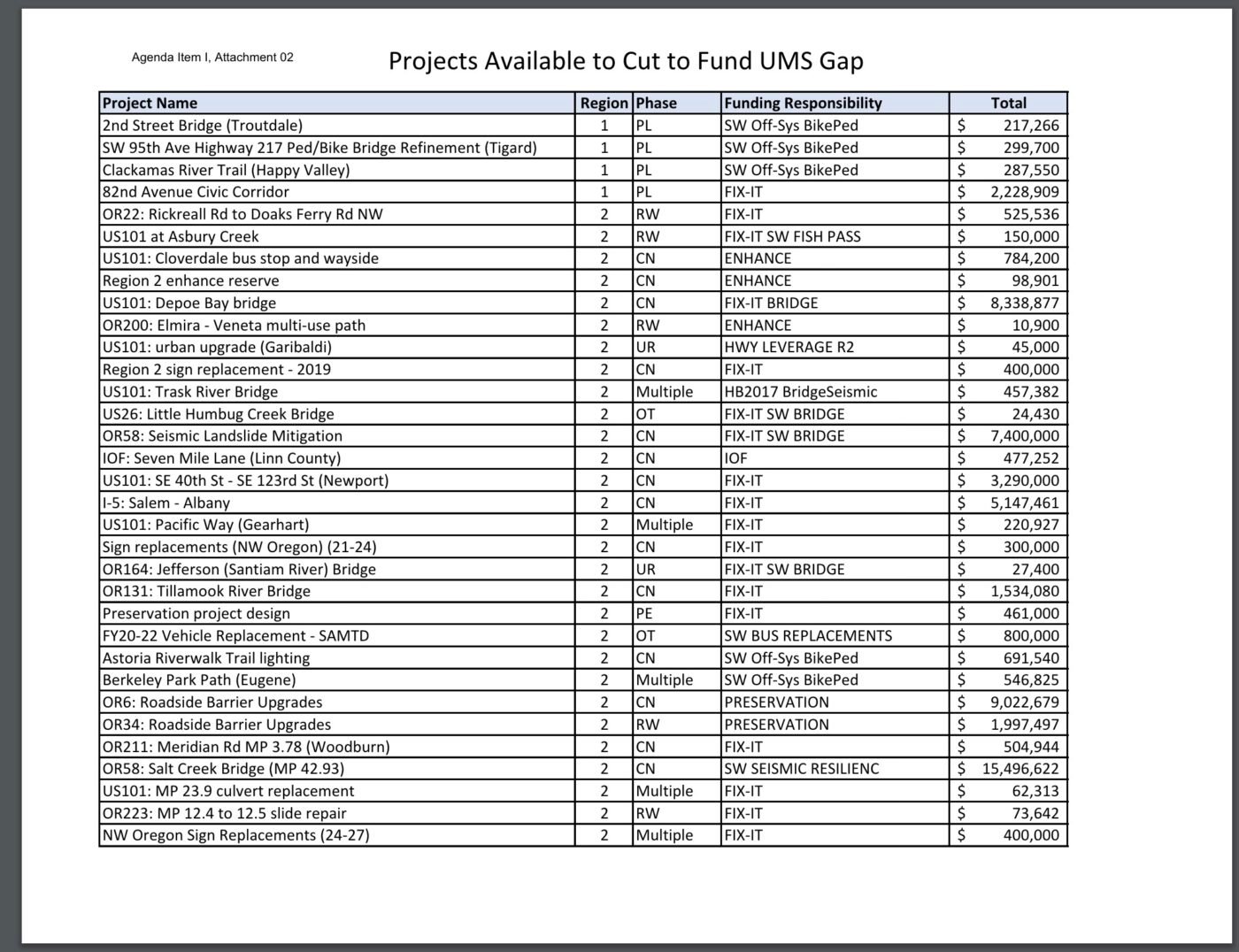
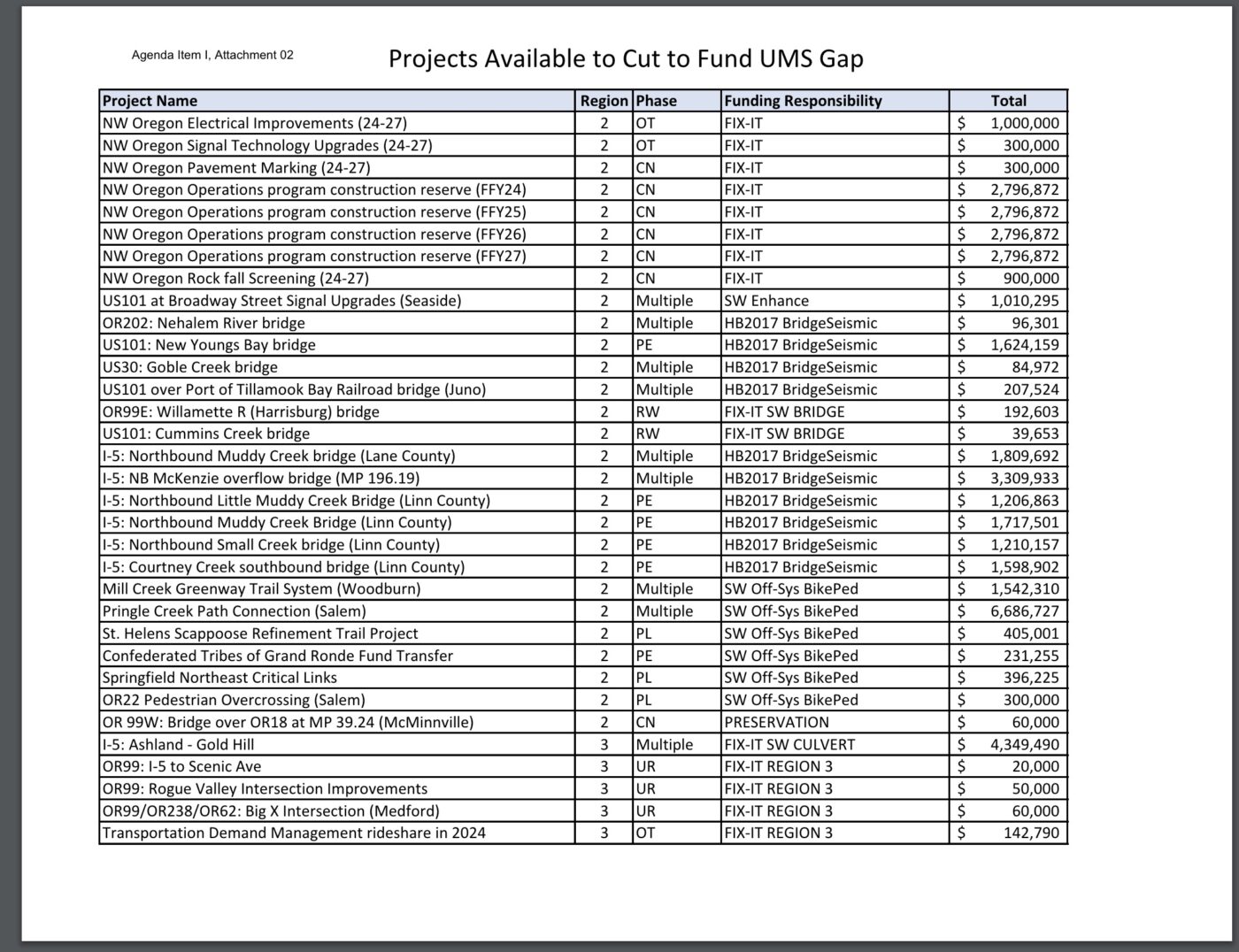
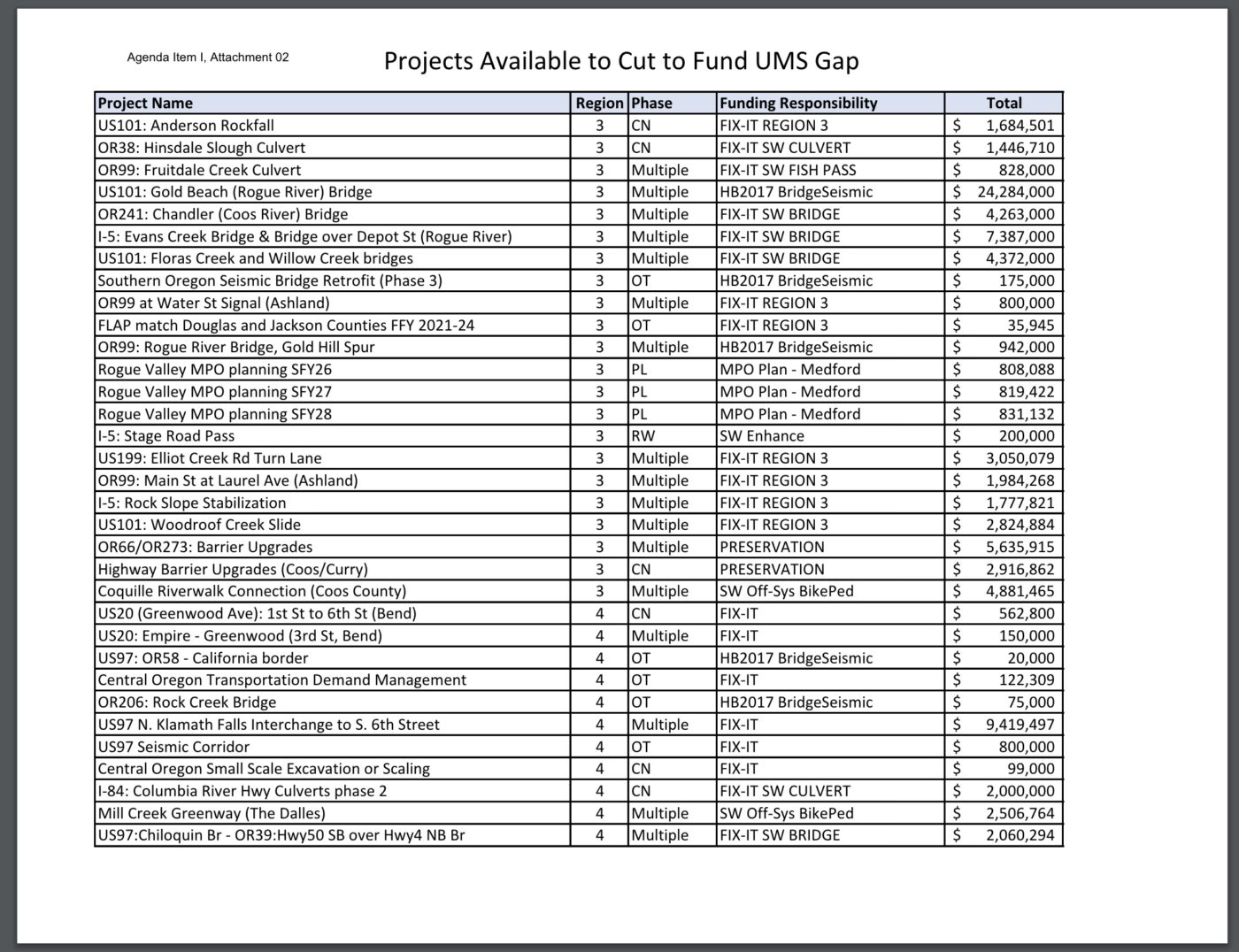
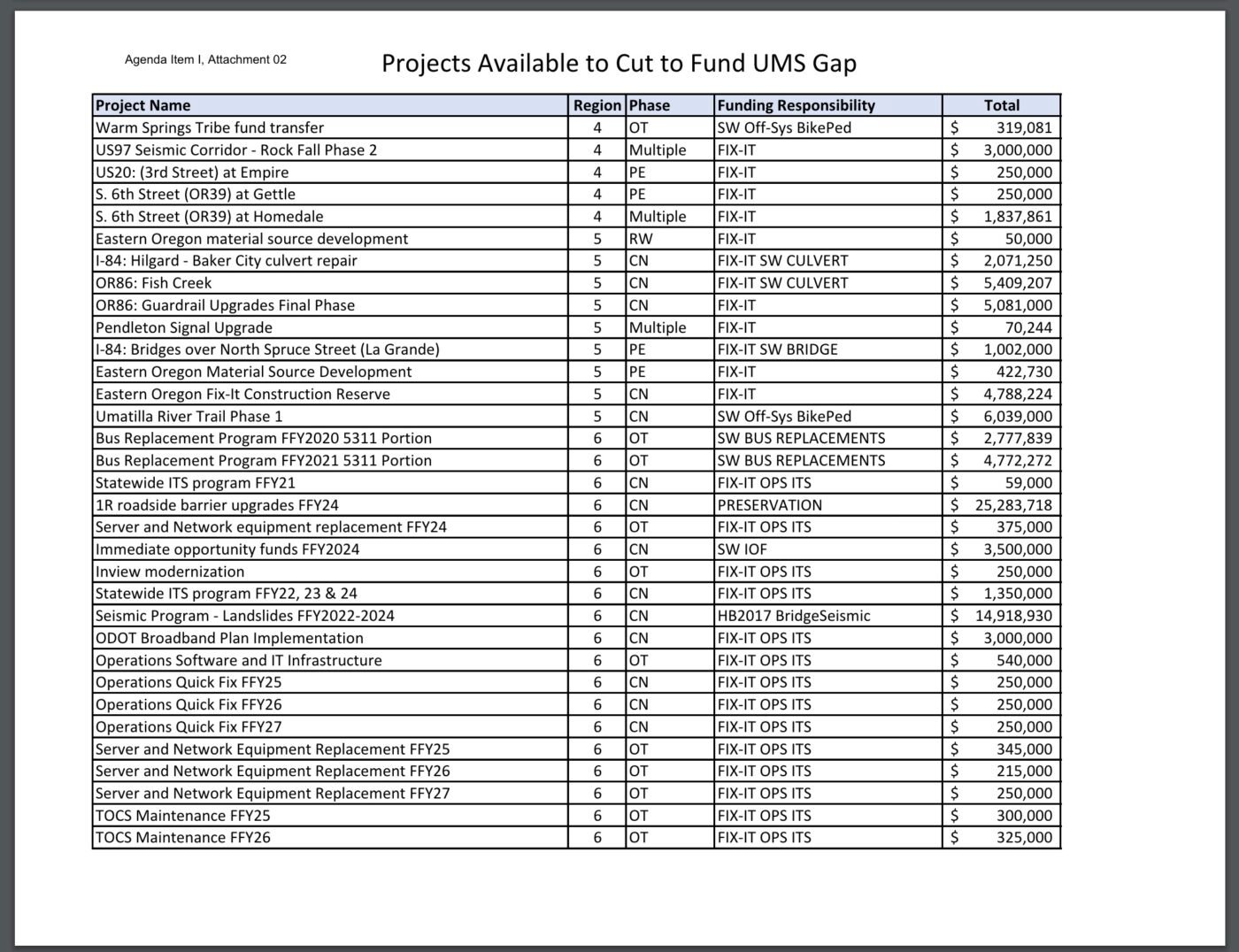
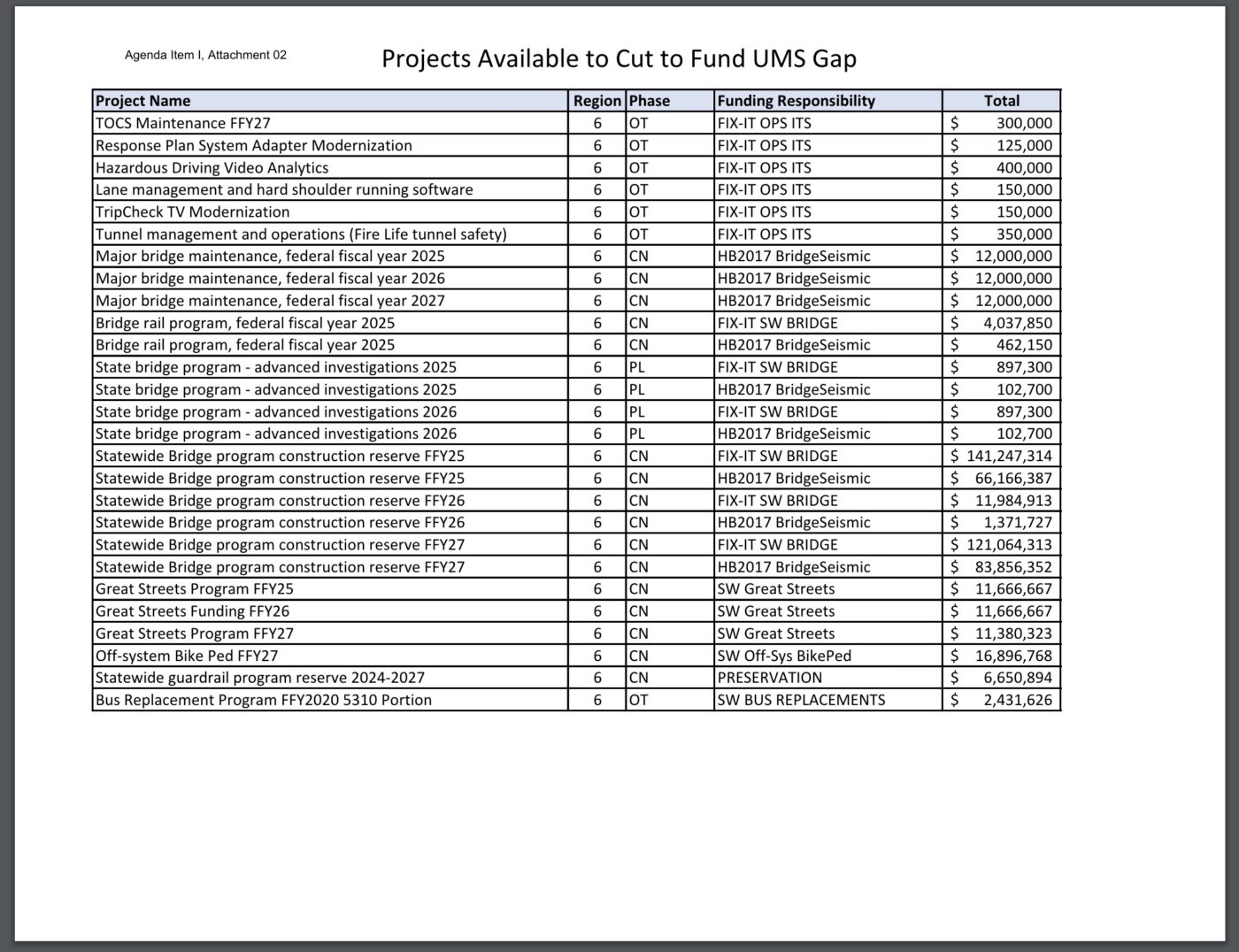
“It’s clear just from looking at the list, closing the gaps will lead to deferring projects and will be very painful,” Brouwer shared. “We have about $600 million in bridge projects that are shown on this list, so you’d be potentially getting rid of almost all of those bridge projects in this coming STIP.” “Of course there’s going to be serious concerns from those communities and from those interested parties,” he added in a major understatement.
While commissioners were not eager to address this funding conundrum, ODOT staff pressed for guidance. In the end, they agreed to continue with the federal INFRA grant application and just hope that they could come up with the $250 million required local match. “If they give us the grant, we’ll find the money,” Commissioner Beyer said, confident the legislature would not want to refuse $750 million.
“I think given the indications we have from the Feds that they’re willing to put the money on the table, we will be imprudent in not asking for that,” he added. And OTC Chair Julie Brown agreed: “It isn’t very often you get a congressional push behind a project like this.”
But Commissioner Smith shared concern. “We’d be committing $600 million to complete the Rose Quarter, and we don’t know where that money’s going to come from. And then we are already under contract to complete Abernethy Bridge, so we don’t have a choice there,” she said. “… Continuing to agree to spend money we know we don’t have is very concerning.”
“From a business sense, it doesn’t make sense that you commit to something when you don’t know where you’re going to find the funding,” Chair Brown replied. “But this is the way our government works. It’s crazy. And now it puts us in a place where we have to work 10 times harder to make those sacrifices.” Brown feels these hard choices should encourage people to reconsider tolling to help raise funds.
ODOT Director Kris Strickler popped into the meeting to share his thoughts, saying he doesn’t recommend delaying any planned STIP projects to fill the gaps. He thinks the path forward is a financing plan and to lobby the legislature for a bailout in 2025. Strickler is confident that lawmakers will want to “complete the unfinished business of HB 2017 [the previous infrastructure spending bill]” and that the only remaining business is to fully fund the Rose Quarter project.
Finding money will be hard for ODOT and the legislature, but finding support from Oregonians for whatever course they choose, might be even harder.
At the end of the meeting, after hearing that giving ODOT another $300 million in bonding capacity would cost taxpayers about $22 million a year, OTC Chair Brown said, trying to muster some optimism, “It’s doable. I’m smiling at the State Senator in the back of the room. It’s doable.”
